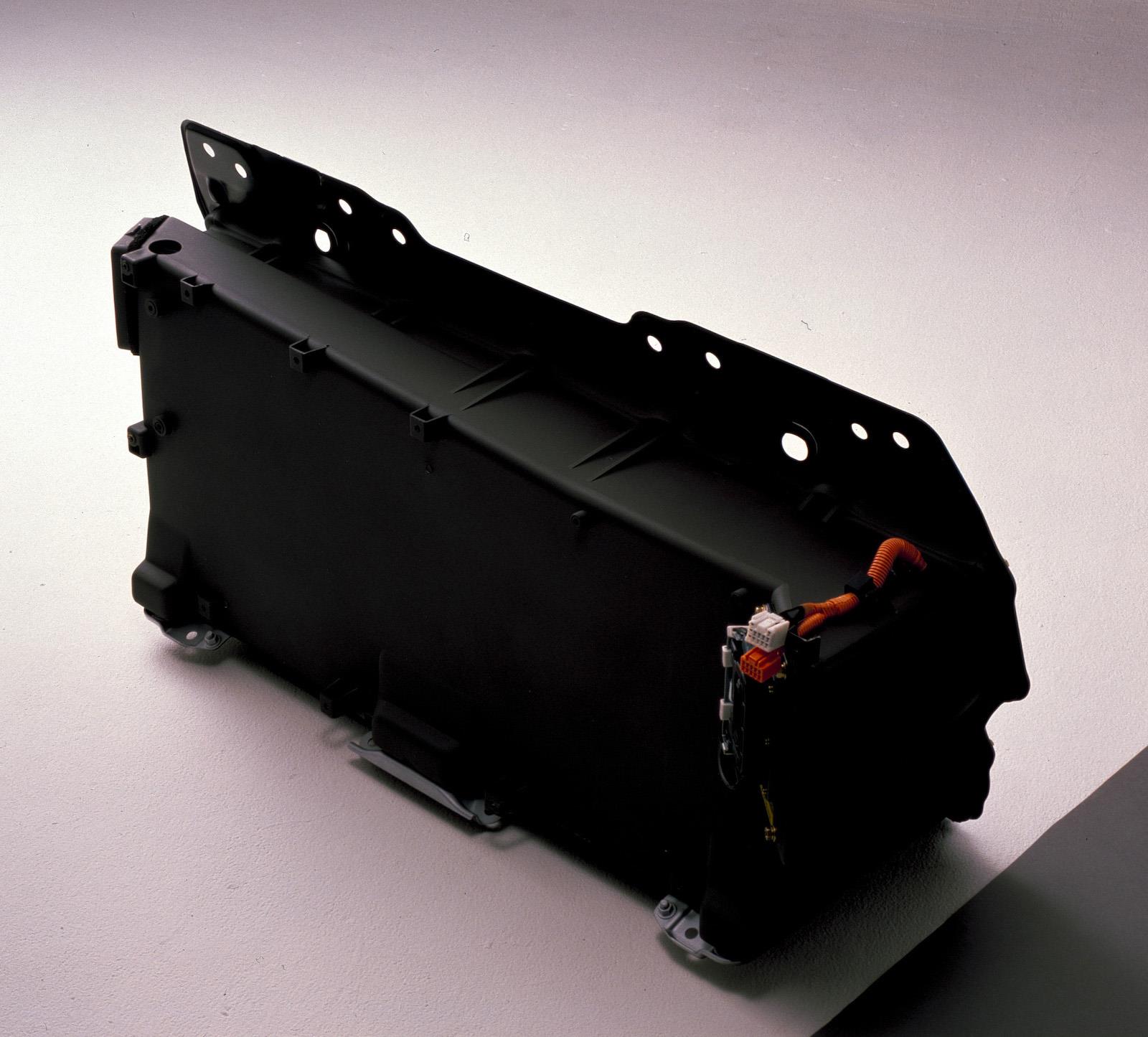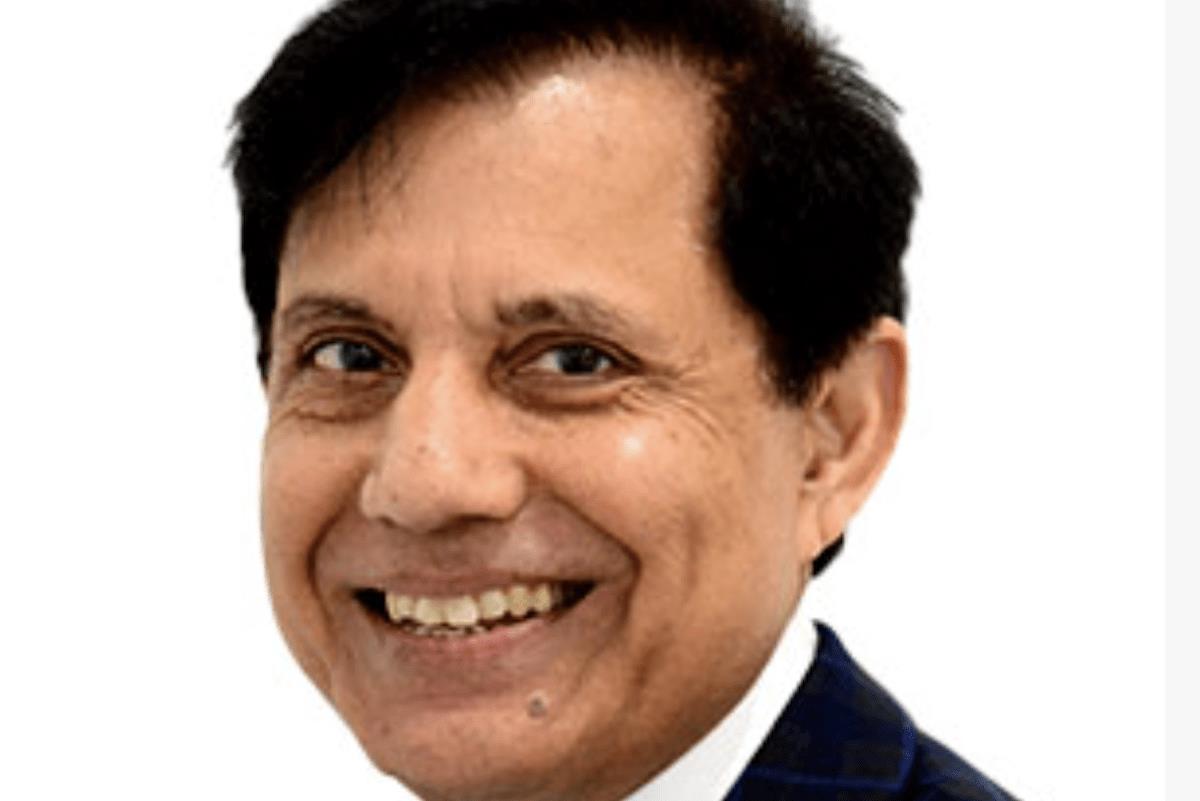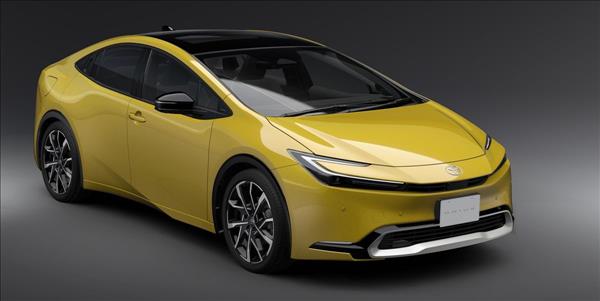(MENAFN- Asia Times) This article is a follow-up to an earlier report, the prius at 25 .
Toyota's 1996 tie-up with Matsushita Battery Industrial Company was to have long-term consequences. It helped solve one of the Prius's main technical obstacles, by creating an extra power source so the car wouldn't have to run entirely on its combustion engine.
Not widely known is the fact that Toyota began working with Matsushita Battery before the Prius project. In the early 1990s, the automaker made a decision to utilize nickel-metal hydride batteries for electric cars in place of conventional lead-acid devices.
Toyota management argued, correctly, that nickel-metal hydride, despite its significantly higher cost, holds twice as much energy as lead, in theory doubling the driving range. And for electric cars to have a chance in the marketplace, extended driving range was critical.
With that in mind, the automaker launched a pair of parallel research programs in 1992, one with Matsushita Battery and a second with Toyota Automatic Loom Works, Ltd.
Toyota Automatic Loom Works (Toyota Jidō Shokki in Japanese and“Shokki” for short) is the automaker's foundational company. Originally a manufacturer of automatic looms, Shokki developed an automobile engine, then a car, in the mid-1930s before splitting off its automotive division to form Toyota Motor Co.
Since renamed Toyota Industries Corporation (but only in English), the company was tasked with developing battery technology to improve its forklift business – ranked number one in Japan, both then and now.
Japan already had staked out a leadership position in nickel-metal hydride batteries for small applications in the consumer electronics field such as early-generation cordless phones, laptops and power tools.
But moving upmarket to larger applications such as cars proved daunting. The problem, involving the battery's material mix, was resolved by a Michigan-based startup, Ovonic Battery Co, which would become an important part of the Prius story – although few but industry old-timers know the story today.
The rest of the story
Ovonic was a subsidiary of Energy Conversion Devices Inc., the brainchild of Stanford (Stan) Ovshinsky, the legendary American inventor.
Ovshinsky and his wife were early proponents of promoting a hydrogen economy. Among his 400 patents were patents for solar cells, hydrogen fuel cells and semiconductor materials in addition to nickel-metal hydride batteries.

Inventor Stanford Ovshinsky. Photo: Wikipedia
Ovonic would enter into more than 30 technical agreements with the world's leading battery manufacturers, names like Varta in Europe, Duracell in the US, LG Chem and Samsung in South Korea. And in Japan: GS Yuasa, Hitachi Maxell, Sanyo Electric, Toshiba Battery and Matsushita Battery.
In the auto industry, Ovonic formed a joint venture with General Motors in 1994 to manufacture batteries for future electric cars. At the time, GM was testing the Impact, predecessor of and prototype for the iconic EV1 – which went on the market in December 1996 and was to be made famous (or notorious) in Chris Paine's 20o6 documentary“Who Killed the Electric Car?”
Bob Galyen, who headed the battery team for both cars as a senior engineer at GM's Delco Remy Division and who will be the subject of our next report, acknowledged there were range problems with the EV1: It could run for only 80 miles per charge in combined city and highway driving.
But those problems were largely due to the car's use of a lead-acid battery and would be substantially resolved when the team switched to nickel-metal hydride in 1999. After all, GM owned 51% of Ovonic including Ovonic's patents. By switching to nickel metal hydride, the team boosted range to more than 100 miles.
To put that in perspective, the first generation of the Nissan Leaf, fitted with an early-generation lithium battery, had a range of 73 miles. Nissan sold 21,900 units in 2011, the Leaf's first full year on the market.
GM pulled the plug on the EV1 in 2002.
“It broke my heart,” said Galyen, who 10 years later would be offered the chief technology officer job at CATL in China and would spend the next seven and a half years in Ningde working with CATL's chairman Robin Zeng. Today, CATL, short for Contemporary Amperex Technology Ltd, is the world's leading manufacturer of lithium batteries.
Back in Japan, in 1995 both Matsushita Battery and Toyota Automatic Loom Works were struggling to meet their performance targets. Shokki was testing two full electric models including the EV50 concept, which Toyota at the 1993 Tokyo Motor Show billed as an electric“city commuter.”
Batteries were recognized as a major problem well before the Prius project kicked into high gear in November 1995. During test drives,“the batteries would frequently die,” Prius team member Satoshi Ogiso recalled.“Moreover, battery quality control would become more complex during mass production, when 240 cells would need to be connected in series.”
Ogiso, who would rise through the ranks and is now president of Toyota subsidiary Hino Motors, added:“The performance of the nickel-hydride batteries was half the estimated level, and their size was double the design. The hybrid system charged and discharged the batteries frequently, and the team had to prevent the 'memory effect' from shortening the batteries' lifespan.”
One year before the Prius's December 1997 launch, Toyota formed a joint venture with Matsushita Battery and its parent, Matsushita Electric Industrial Company, to produce better nickel-metal hydride batteries for the car.
Named Panasonic EV Energy Co, PEVE for short, the operation would begin making Prius batteries in 1997 in leased facilities within Matsushita Battery's Kosai production complex in central Japan. At the time, the two Matsushita companies held a combined 60% equity stake in the operation.

High-powered nickel-metal hydride battery for the Prius. Photo: Toyota
Matsushita Battery was collaborating with Toyota on both the Prius and the RAV4 EV. The automaker moved forward with both Matsushita Battery projects, launching the Prius on schedule in December 1997 and the RAV4 EV in September 1996. Toyota had begun fleet-testing the RAV4 EV in January 1996.
Separately, PEVE began supplying Honda's EV Plus, which went on sale in California in May 1997.
Nickel-metal hydride batteries, in the words of Dave Zoia, veteran auto writer and editor at Ward's Automotive,“ushered in the modern movement to electrification. Though the technology has been supplanted by lithium-ion, the current 'all-in' movement by many automakers to electrify their fleets and policymakers to push for electric cars was sparked by nickel-metal hydride and the success of hybrid vehicles, most notably the Prius.”
“The importance of the technology shouldn't be underestimated. It was a critical stepping-stone down the path the global auto industry is now headed.”
Toyota would raise its share in the joint venture to a majority 80% in 2010, making PEVE a subsidiary. It would change the name to Primearth EV Energy Co.
The story behind the rest of the story
The issue of who owned the patent for the Prius battery would become a source of contention in the years to follow. It shouldn't have been. On the original patent dating back to the 1980s were four names: Stanford Ovshinsky, Benjamin Reichman, Arie Reger and Krishna Sapru. We mention their names for a reason that will become obvious later in the report.
But essentially their patent involved making batteries, straight from the patent filing, that“utilize a hydrogen rechargeable anode of a 'disordered' non-equilibrium multicomponent material,” thus“attaining high-density energy storage, efficient reversibility [and] high electrical efficiency.”
“Sure,” said John Warner, a respected battery expert, when we asked him to explain that in a way a layman might understand.“It's a disordered material,” he said.“Its atomic structure is such that it does not have a repeatable crystalized structure.”
Try again, please.“Okay. Take a bale of hay. All of the pieces are going in different directions. You won't find a clear structure there.” Thus“disordered,” which is at the heart of the Ovshinsky breakthrough.
Warner is a senior executive at American Battery Solutions, Inc, a Michigan-based lithium battery startup.
In June of 1998, having heard grumblings from across the Pacific that the Prius's battery wasn't original Japanese technology, I reached out to Ovonic and had a pleasant conversation with its president and CEO, Subhash Dhar.

Subhash Dhar. Twitter screen shot.
Having learned about the auto industry mostly through the lens of Toyota and other Japanese automakers, it was hard for me to believe that the future of the industry – after 100 years of the internal combustion engine we were just at the beginning of a new age of driving - might be in the hands of a small technology company in Michigan.
Nineteen years later, I had occasion to attend an automotive conference in the northern part of the state. The name of one of the speakers, Subhash Dhar, seemed familiar. After his presentation, we exchanged business cards and concluded that we had spoken in 1998.
It turns out that Dhar wasn't just the president and CEO of Ovonic, he was the founding president and CEO. And his former company - Ovonic would file for Chapter 11 in 2012 - not only had licensed the technology to Matsushita Battery; it had then become involved in a legal dispute over an alleged patent infringement.
In fact, there were two disputes, one involving the battery's first generation, the second involving the first major refinement several years later.
The long and the short of the story is that Matsushita Battery's licensing agreement was for small applications, not cars – and thus Ovonic's legal challenge to the Court of International Trade.
“When we licensed the technology in 1992,” explained Dhar,“it was for consumer applications. We put a two limitations on the agreement - consumer applications and smaller cells. When Toyota came out with Prius, it clearly wasn't a consumer application. It was a propulsion application, which was specifically excluded from the license. And although Matsushita Battery and later PEVE made improvements in the technology, those improvements didn't negate the basic patent.”
The parties settled, averting a court ruling. Toyota and Matsushita Battery agreed to pay and, as Dhar would say in our most recent conversation,“Life went on.”
Since the first Prius, PEVE/Primearth has delivered an estimated 22 million batteries, nearly 90% made from nickel-metal hydride. Not counted in the total are lithium batteries supplied by Prime Planet Energy & Solutions Inc, Toyota's newer joint venture with Panasonic.
Which means, we asked, that all of those nickel-metal hydride batteries – an estimated 20 million in total – use Ovonic technology?
“Yes,” said Dhar, now 71 and and still active in the battery field as chairman and CEO of American Battery Solutions. And yes, the ABS lithium battery startup is his brainchild and Warner is one of his chief lieutenants.
Postscript: The late Krishna Sapru, one of the Ovonic inventors, was Dhar's sister. Sapru had emigrated from India several years ahead of Dhar, who was a young rising engineer in India. Dhar's name is on many of the secondary patents. He's now bullish about prospects for lithium batteries.
While these historic events were occurring, veteran Tokyo correspondent Roger Schreffler represented Ward's Automotive and Hydrogen & Fuel Cell Letter.






















Comments
No comment